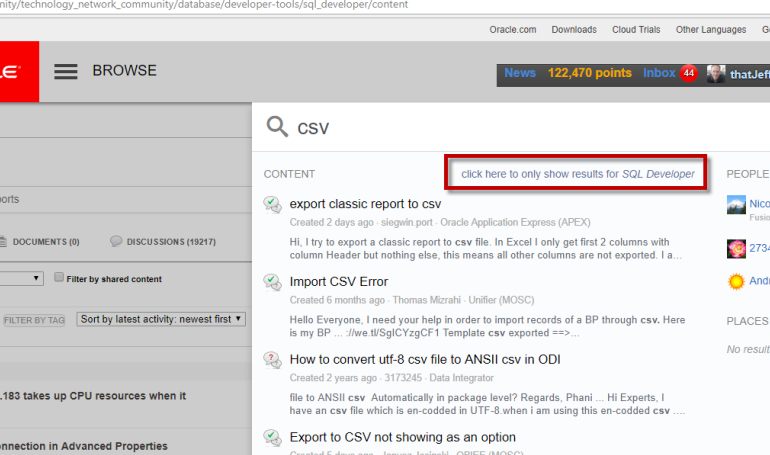Defining what success means to you and your blog is something you have to do before you can answer questions like ‘Is this working?’
If you’re using your website or blog to sell widgets, it’s pretty easy to measure. Are we selling more widgets or do customers on average spend more per transaction, or do we make more money with less products – these are all pretty easy metrics to measure.
But if you write for the sake of writing, how do you know if something ‘works’ or if something is worth doing?
Last year I implemented a new WordPress Plugin called LinkWithin. It’s pretty ubiquitous these days. Since I’m not an expert when it comes to web design, I try to emulate those sites and writers that I admire. You can find these people on my ‘Reading List‘ resource page.
LinkWithin gives your readers the opportunity to find more articles that might be of interest to them. This means AFTER you manage to get someone to your site, that you have a better chance of keeping them there for extended periods of time.

But why care?
I’m not trying to sell anything. But if I were, additional page views and more time spent on the page probably equates to more widgets sold or higher ad rates if you do that sort of thing.
So what’s in it for me?
My goal is to increase the approval rate of the technologies I write about. An empowered and educated user is more often than not, a happy user. That’s my goal. So if I can get people to read more on my site, then I hope my articles will funnel a ‘normal’ user to a ‘power’ user.
By the way, is that working? Traffic’s up, but does that mean our customers are doing more with our tools?
The LinkWithin Numbers
Using Google Analytics, at first glance there’s nothing super sexy about the traffic that LinkWithin is helping to drive. It’s the #9 traffic referral site. Top 10 isn’t bad you say – but realize that the #1 referrer drives more than 10 times the traffic.
Here’s the raw numbers:
| Source | Visits | PagesVisit | Avg. Visit Duration | % New Visits | Bounce Rate |
|---|---|---|---|---|---|
| widget3.linkwithin.com |
So these are just some numbers. What meaning can we derive from them?
Over 365+ days, only 204 ‘visits’ were initiated from someone clicking on the thumbnails at the end of each post. That’s quite a bit less than 1 a day. I’m tempted to call that a fail, and disable the plugin. My pages would load faster and there would be less ‘clutter’ on the page.
But wait, is there more here?
The Pages per Visit metric is 3.71. The average number of pages a visitor to my blog reads for that same time period is 1.49. That’s a 249% increase. Hard to see that as anything but a big ‘win.’
Average visit duration is 5 minutes and 44 seconds, which compares to 1 minute and 33 seconds overall on the site. That’s a 370% improvement. By the way, I’ve noticed that just about every site out there that’s not video based averages something like 90 seconds visit duration time…there’s a human pysch study there waiting to happen. Is that our new attention span?
The last significant metric is ‘bounce rate’ and that too is a big win. Average bounce rate for my blog over the past year is 79.26% yet for visits initiated from LinkedWithin it’s only 36.27% That’s less than half!
So what’s the verdict?
I don’t get a LOT of pageviews served up via LinkWithin – but the traffic it does drive is helping build ‘power users.’ There are people that come to my site driven by a Google search result, read one page, and are gone. But then there’s a couple hundred folks that come and stay for more than 5 minutes and read more than 3 stories. This makes me very happy.
Just a few disclaimers – Google Analytics is not the same as reading your raw server stats. I’m sure the Apache logs would show different numbers, but I’m confident that the Google stats are relevant and do properly identify trends. Also, the way that Google measures or counts the ‘visit’ and ‘exit’ events on a website are pretty gnarly. Make sure you understand what these metrics signify before you give them too much weight.
Surprised I’m sharing this information freely?
I said earlier that I like to emulate bloggers out there that I admire. One of those is Ana from TrafficGenerationCafe. She shares her monthly costs and revenues. Now that’s what I call open and honest!
I’m Not Using LinkWithin Anymore
You’re reading this post on my blog, so you can already see I don’t have the Linkwithin links at the bottom of this post. So what’s the deal, you ask? I moved my blog to a new service provider, WPEngine.
WPEngine is not a fan of CPU-sucking plugins. LinkWithin does not ‘suck’ – it’s great and it works. However, it queries your MySQL database every time you pull up a post. As your traffic increases, so does the CPU load. WPEngine does not like this, and so does not allow it’s customers to run this WP plugin. I was OK with this as I figured the increase in traffic based on faster load times would negate the benefits I discussed in this post.
But, I was still a bit disappointed. I wanted my cake and I wanted to eat it with a big glass of milk too. Mmmm, cake. But I digress. I recently found nRelate. You’ll now find recommended posts and a slider on my pages – both powered by this free set of WordPress extensions. But, aren’t I incurring the same wrath of the WPEngine gods? No – because the indexing and content links are generated OFFSITE. That is, the CPU sucking is happening away from my database and is all being handled by nRelate. Or so, that’s the story.
So I’ll be running this setup for awhile, and I’ll be sure to update this again once I have some significant data to share.




7 Comments
They opened the Drone website yesterday, and it’s already being swarmed
by curious lookers. The reason that this may be important is sometimes lighter
drones are unable to carry a decent size camera.
The story is told by Christopher Schmidt, the owner of the drone that
was targeted by the fast-flying bird.
Link within does allow you to offload related post functionality to their servers and it is not banned by wp.engine as I am using it and wp recommends it as one of the alternatives to use. However, your post was back in January so I am not sure if this recent information was the same back when you wrote this article.
Looks like that has changed! Or rather, the LinkWithin plugin has been enhanced to allow for the offloading of the post generation to their own servers. Here’s the updated list.
For what it’s worth, the nRelate generated lists tend to show more relevant posts on my blog than compared to LinkWithin – again, this is based on what I was seeing many, many months ago. I’m very happy to have many options to choose from.
Currently, I’m using linkwithin on my blog.
Is nRelate available for blog on blogspot platform too ?
My blog platform is blogspot , therefore I could be careless about CPU suck and any server-stuffs.
And what are the advantage of using nRelate, beside it didn’t suck your CPU ?
It’s available for blogspot too
http://nrelate.com/install-products/install-related-content/
The biggest benefit for me has been more relevant ‘related’ links for my stories.
I’ve had linkwithin for about 4 months and I’ve found it helpful in generating pageviews, but the “related” posts usually aren’t the most accurate. I just saw something about nRelate while searching for linkwithin so now I’m curious if that’s a better fit for my blog. Thanks for posting some statistics highlighting the benefits of linkwithin.
That reminds me, I should check the analytics again to see how I’m looking now. But I do see much better intelligence with determining relevancy for my posts.